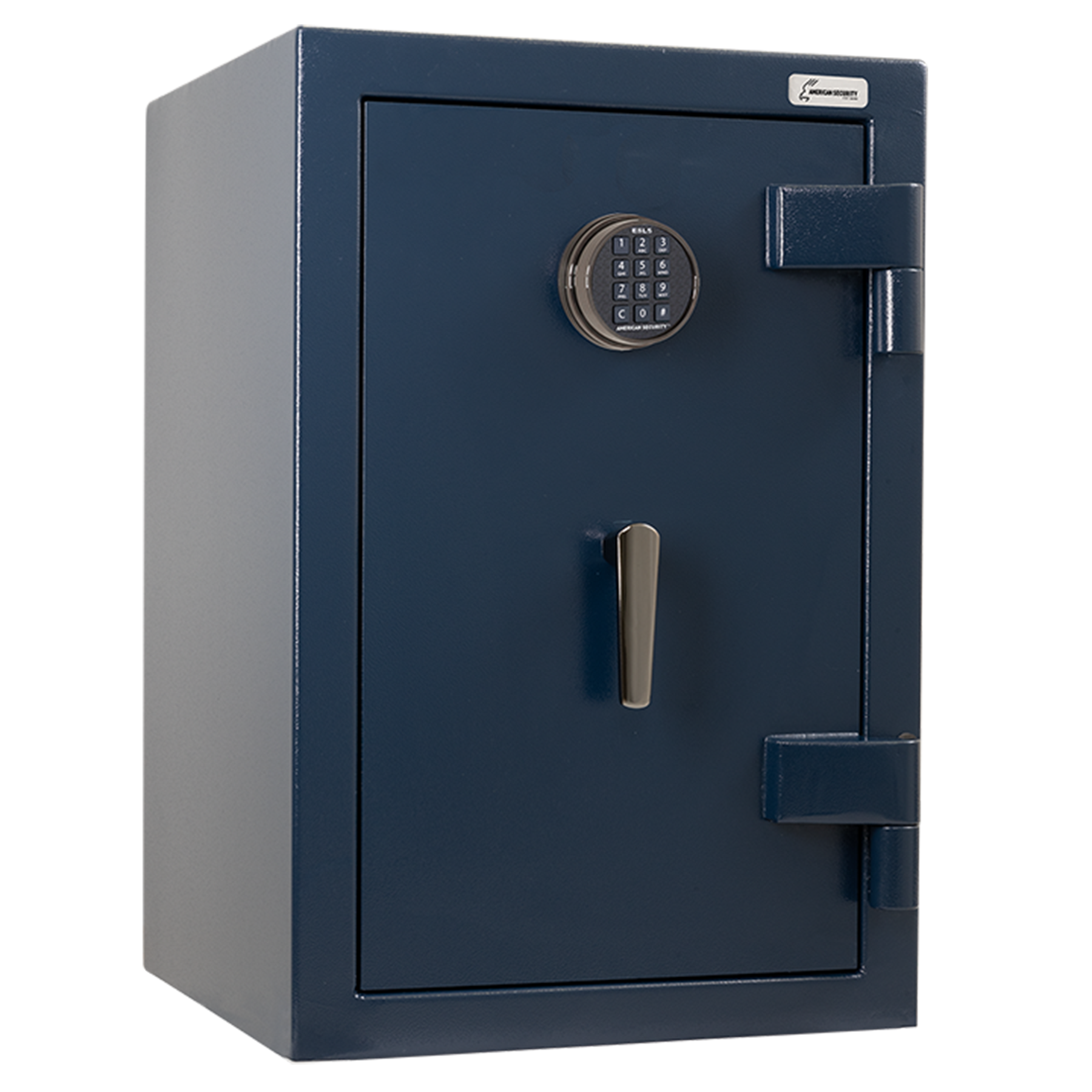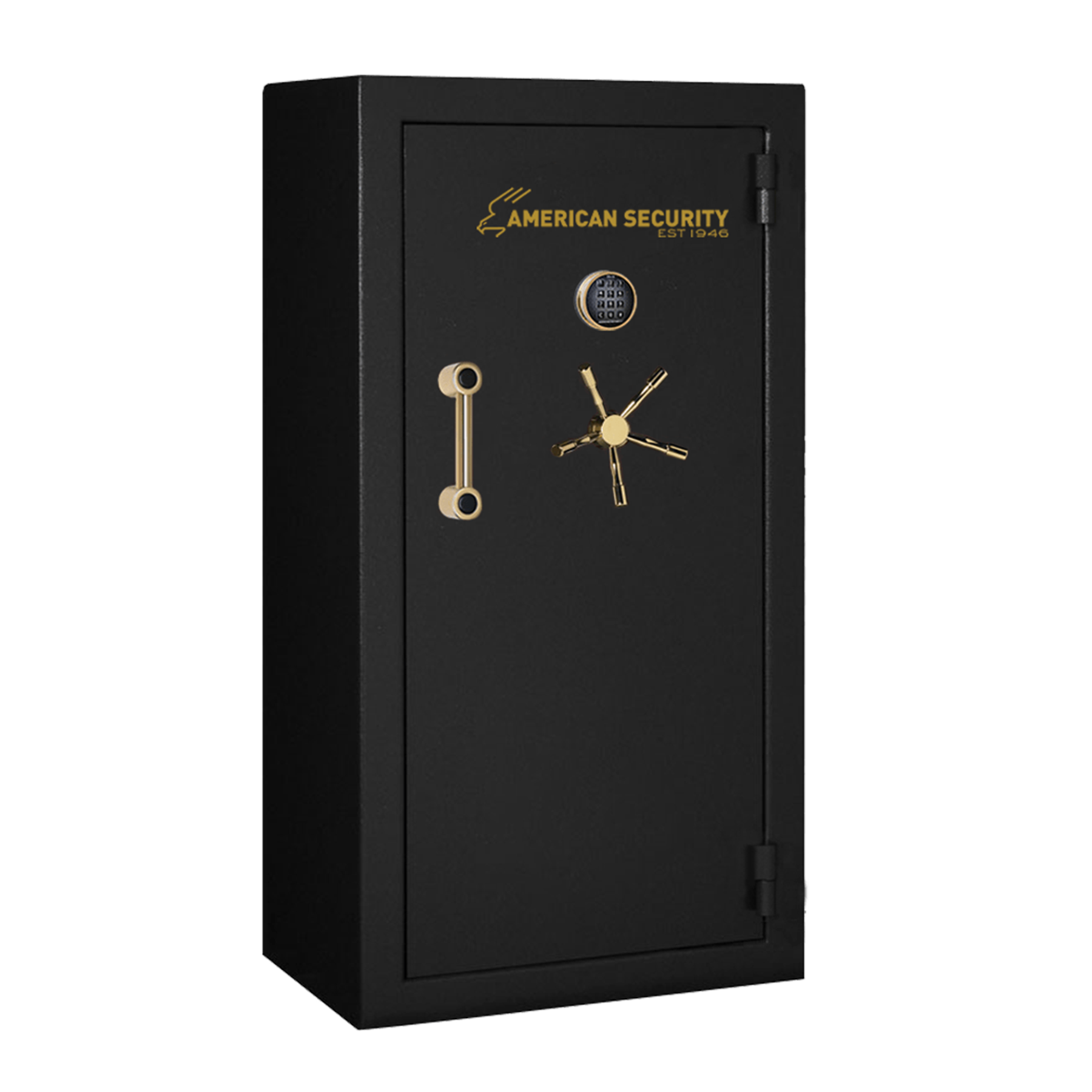Frequently Asked Questions
PRODUCT SELECTION AND INSTALLATION FAQ
Although many safes look similar from the outside, not all safes are created equal. Apart from the obvious differences in size, interior layouts and appearance, some safes are designed to protect contents from theft, while others are designed to protect contents from fire. The most popular safes are hybrid models designed to provide protection from both threats.
There are a number of factors to consider when choosing a safe that will be effective for your application. There factors include but are not limited to....
- Most importantly choosing a model that has an appropriate build quality for the value of contents that will be kept in the safe. We can help guide you in the right direction here
- Considering whether you need protection from theft, fire, or both
- Taking into account the weight of the safe specifically if it isn't bolted to the floor. In a burglary, the safe will become a target if it's found and if your safe isn't fastened and it's light enough to be taken the whole safe will disappear with your contents inside. Generally we recommend safes to be at least 350 lbs if not fastened to help them stay put but certainly fastening the safe is better if this is an option
- Choosing a size of safe appropriate for the volume of contents that need to be stored. People often select a smaller safe to reduce the upfront cost but then wind up calling us later telling us they wish they had purchased a larger model
- Select an aesthetic to suit the environment, whether that be a more basic/standard model if the safe will be installed out of sight or one with higher levels of fit and finish for environments like custom walk in closets and bespoke home offices. Some models of safes can be ordered with literally any custom color
In most cases we can fasten your safe to the floor to ensure it stays put. Fastening taller safes is also a good idea not just for security reasons but also for safety reasons to eliminate the risk of the safe tipping in either a seismic event or just because some curious kids are pulling on the handle. The only situations in which we can't fasten a safe is if there is radiant in-floor heating in the location where the safe will be placed or if the safe is going into a strata building with concrete floors as the strata generally won't allow us to drill into the structure without prior consent following costly floor scans. If you can't have the safe fastened be sure to choose a heavier safe. When you move, any fasteners can be uninstalled from inside the safe and the safe can be moved to a new location.
If you live within about a 4 hour drive of the Lower Mainland or on Vancouver Island we can personally deliver and install your safe for you. Although some customers decide to come and pick up their safe from us the vast majority of our clients have us deliver, place and fasten their safe. This service comes at an additional modest cost but most folks we deal with say this was money well spent and are impressed with how discreetly and carefully we look after this. Although for their convenience, some safe companies choose to contract this work out, at Vancouver Safes we understand you're very particular about who comes into your home or back office and who knows about your safe. All of our local delivery and installation work is performed by the owners of Vancouver Safes, licensed security professionals for over 25 years with extensive experience working in high end homes and environments with expensive finishings. Not local to us? We also can ship any safe anywhere in Canada.
TECHNICAL FAQ
Electronic locks are found on most newer safes and can even sometimes be retrofit onto older safes to make them easier to use. Like safes themselves though, not all electronic locks are of the same quality. An electronic lock found on a big box store safe will be a very cheaply made "no name brand" lock with a 15-20% failure rate in the first 5 years and technical support and replacement parts will be nowhere to be found if you ever have an issue. However, on safes from reputable manufacturers you'll find very high quality electronic locks, tested for high-reliability and certified by UL labs for high-security applications. These locks alone will often cost more than your typical big box store safe itself but you do get what you pay for and when you need to get something from your safe in a timely manner you can count on these to work. The only downside to an electronic lock is that the battery needs to be changed every 1-2 years however your safe will remind you in advance when the battery needs to be changed and these common 9V batteries can be found at any store. It's important to always use good quality (Duracell or Energizer) 9V ALKALINE batteries in safe locks (not lithium, lead acid or carbon-zinc). The advantages to electronic locks are that your code can be programmed by you and changed whenever you'd like without a service visit and they can easily be operated by anyone and provide reliable access to the safe in about 5 seconds.
Mechanical dial locks (often called Group 2 or Group 1 locks) have been around since the first safes were made and have a good reputation for being reliable, however, these locks have many small springs, clips and screws inside them and in some rare cases they do fail. Dial locks will take 15-20 seconds to open (once you're proficient in using them). Impaired vision or hand eye coordination and low-light environments will make operating a mechanical lock much more difficult and if you ever want to change your combination this is something we recommend be done by a professional as there are some technical guidelines that need to be followed to ensure reliable operation. Also, if your code is forgotten there's no backup or override code to get you back into your safe quickly and inexpensively. The advantage to manual dial locks is that there is no battery to maintain.
Biometric fingerprint locks are the newest technology when it comes to safe locks and many manufacturers are now introducing these types of locks to the market. Although there is some "cool factor" to these, for the time being our experience suggests this technology needs to be improved on a bit before this technology is ready for the safe lock market as we've seen numerous instances of biometric safe locks failing to open when they should, or even worse, opening when they shouldn't when a "random" finger is swiped.
No. Although the safe will warn you when the battery is getting low, if you ignore this warning and the battery gets so low it won't open the safe anymore you can always access the battery from outside the safe and once the new battery is installed the lock will have remembered your code and let you back in.
This really depends on how often the safe is opened and the temperature of the environment the safe is kept in. Generally we find batteries last about 2 years unless the safe is opened quite frequently or the safe is kept in an unheated location like a garage.
Relockers are a mechanism built into better quality safes that act as your back-up security during an attack prolonging the time it takes to open the safe in a burglary attempt. A relocker is a spring loaded steel pin located inside the safe door that's held back by either a steel cable to a glass plate or by a metal retaining plate. When the lock is attacked to attempt to gain access the relocker pin is designed to fire and prevent the safe from being opened even if the primary lock has been defeated or destroyed. It's important to remember that there are thousands of safes sold out there without relockers. Although you can't see it from outside the safe, a UL rated burglary safe will always have an internal relocker.
Assuming you've checked the battery and it's in good condition you may be experiencing an issue known in the safe industry as "bolt binding". Bolt binding occurs when there's an item located inside the safe that puts "back pressure" on one of the bolts when they're extended to lock the safe door. When back pressure is placed on a bolt this in turn puts back pressure on the lock bolt itself and it's common for the safe lock to fail to release when the code is entered. To alleviate this issue, put positive pressure on the door handle turning it in the CLOSED direction WHILE trying to open the safe lock. This positive pressure will take the back pressure off the lock allowing it to open freely. Be sure to see what it was that was causing the obstruction inside and move this item before closing and locking the safe again.
Unfortunately there are products out there (think big box store safes) that can in fact be opened with a large magnet. This vulnerability is a function of very thin steel on cheap safe doors and a very low quality solenoid lock inside the door. The safes we offer at Vancouver Safes absolutely CANNOT be opened with a magnet or we wouldn't even offer them.
SHIPPING FAQ
In order to ensure you receive your safe in the best possible condition we unpack, inspect, clean and test every safe before repacking it and shipping it out to our clients. This way we can ensure the safe has no dents or scratches and that it's in perfect working order when it leaves our warehouse. Rest assured the safe is brand new and comes with full warranty.
We personally provide delivery and installation services in the Greater Vancouver area as well as Sunshine Coast, Vancouver Island and the Okanagan regions. If you live outside these areas we can pack and ship your safe anywhere in Canada using reputable national freight carriers.
If we're shipping a safe to you (not personsonally installing it) and a basic curbside delivery without appointment is all you need then feel free to check out online. If extra delivery services are required then please reach out to us and we can quote the specific services you require.
If you purchase a safe from us and are outside our general service area we can ship it to you using a commercial freight carrier. The safe will arrive strapped to a pallet and the carrier is only obligated to take the safe of the truck in what's known as a curbside delivery. Some carriers provide value add services like inside delivery but this only includes bringing the safe through a doorway (provided the doorway is wider than the pallet) and has a level threshold. An inside delivery would also cover the carrier placing the pallet in your garage. Value add services like inside delivery and delivery by appointment typically cost an extra $50 per service. If you require anything other than a basic liftgate delivery without appointment please contact us so we can quote the specific services you require.
Any Other Questions?
We'd be Happy to Answer them.



